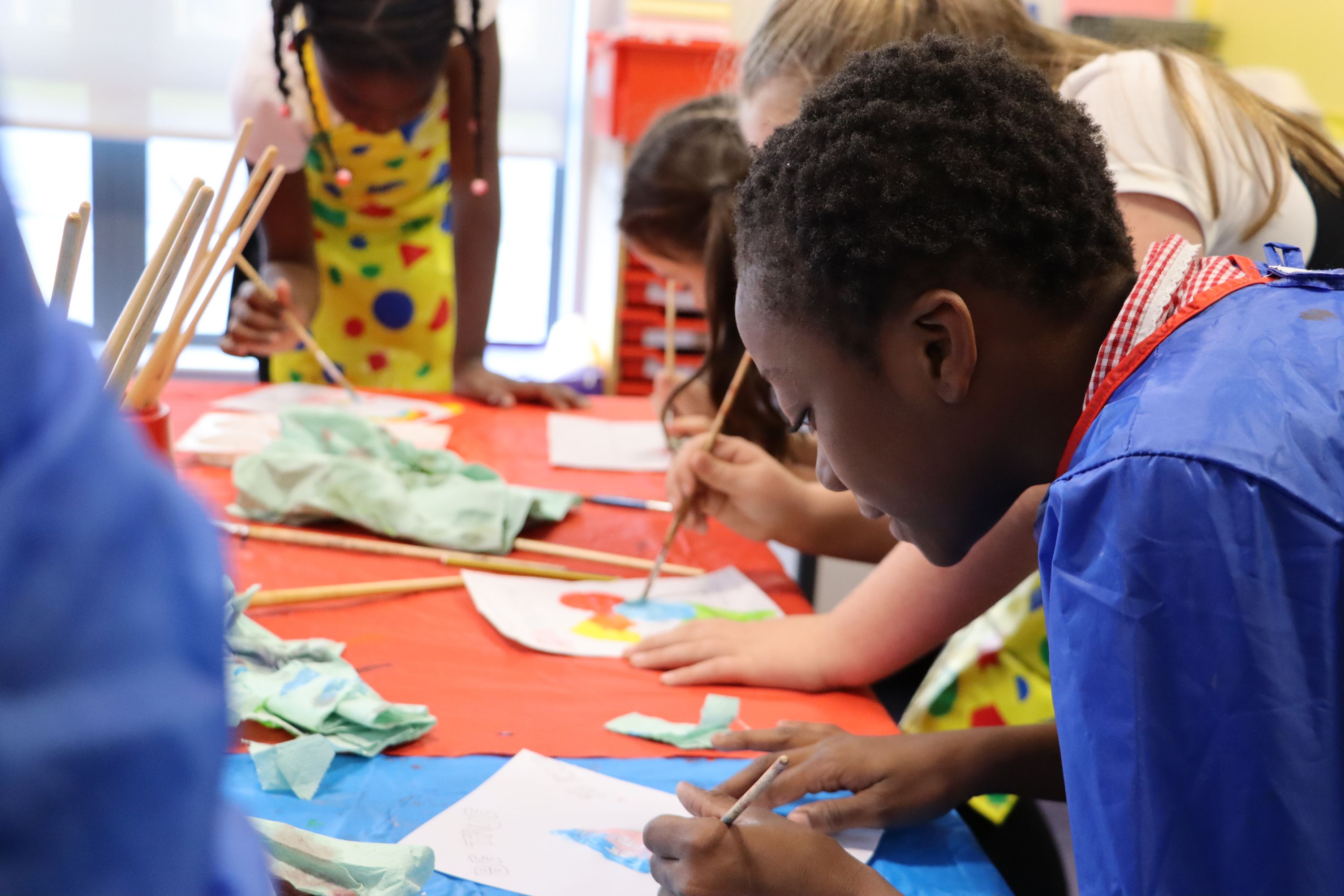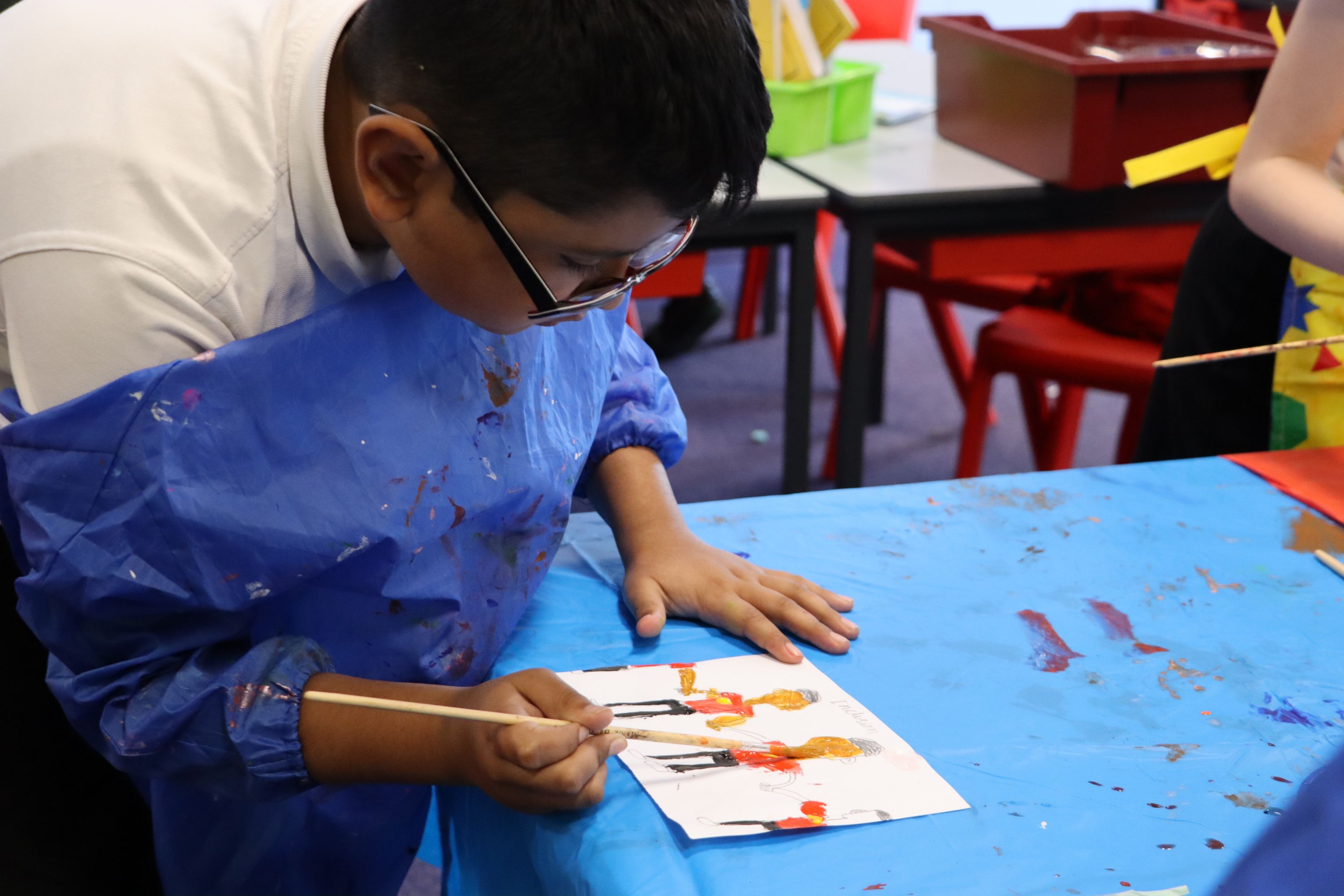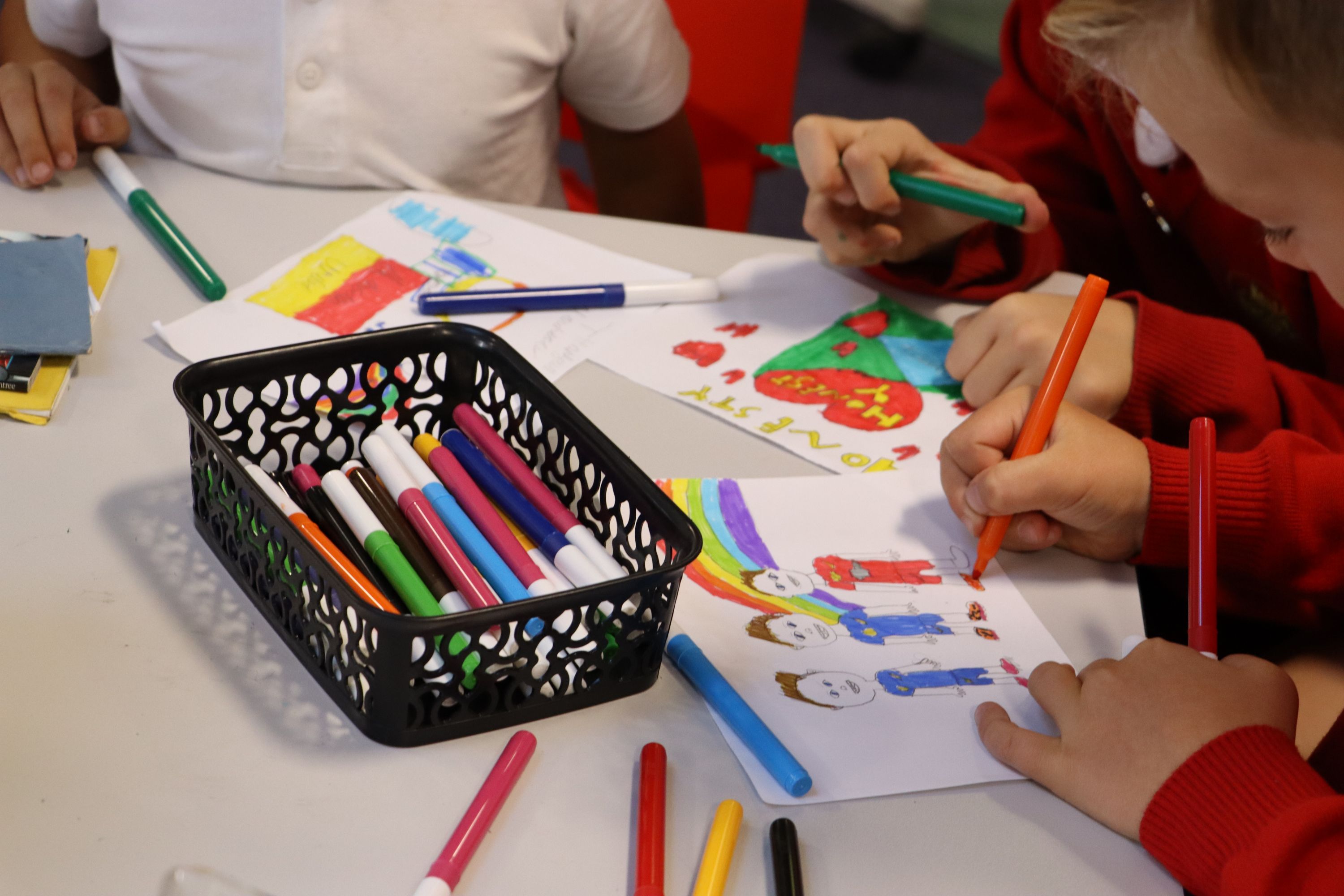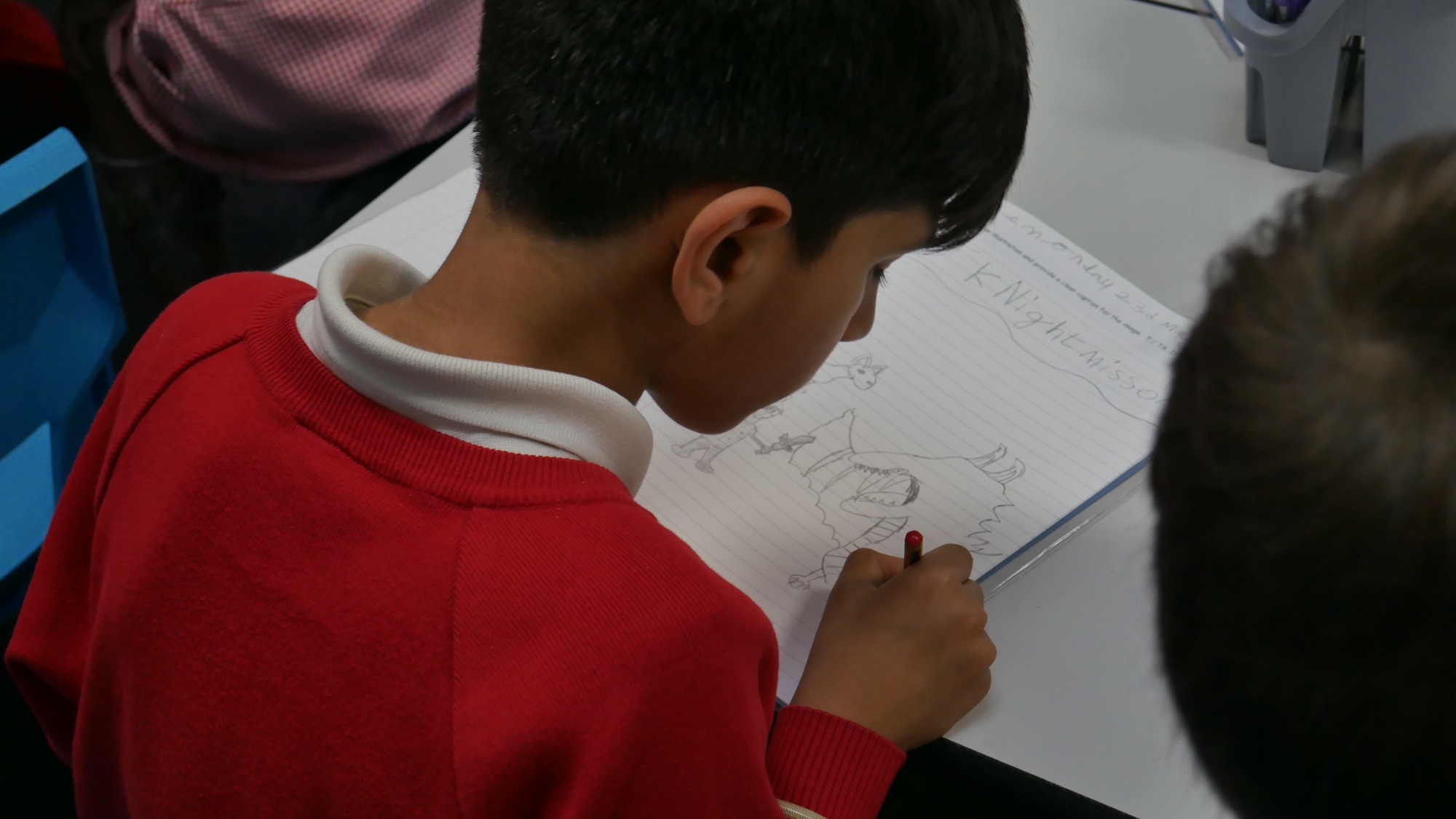Art and Design
Subject Leader: Mrs C Brodie - brodie@saintgeorgescofe.kent.sch.uk
Art, craft and design embody some of the highest forms of human creativity. A high-quality art and design education should engage, inspire and challenge pupils, equipping them with the knowledge and skills to experiment, invent and create their own works of art, craft and design. As pupils progress, they should be able to think critically and develop a more rigorous understanding of art and design. They should also know how art and design both reflect and shape our history, and contribute to the culture, creativity and wealth of our nation.
Intent
Saint George’s Primary Phase believes that Art is a vital part of all children’s education. It holds a significant and valuable role across the wider curriculum, and we are able to offer a variety of enrichment opportunities within the school and beyond in order to explore their creative talents. The art curriculum will develop children’s critical analysis, as well as encourage a deeper understanding of their own and others’ cultural heritages through the study of a diverse range of art and artists.
Children will develop their understanding of the visual language of Art with effective teaching and carefully planned sequences of lessons and experiences. Understanding of the visual elements of Art and Design will be developed by providing a meaningful and relevant curriculum which will provide opportunities for all children to reach their full potential.
Implementation
The skills and knowledge that children will develop throughout each Art topic are mapped across each year group and are progressive throughout the school. The emphasis on knowledge ensures that children understand the context of the artwork, as well as the artists that they are studying. This enables links to other curriculum areas such as Music, Science, History, and Geography, with children developing a considerable knowledge of influential artists, as well as individual works and art movements. Our systematic approach to the development of artistic skills means that children are able to explore a variety of opportunities in which to express their creativity as well as being able to practise and develop some key processes of art such as drawing, painting, printing, textiles and sculpture.
Saint George’s diverse Art curriculum is supported through the availability of a wide range of quality resources, which are used to support children’s exploration when using a variety of different media.
Impact
The structure of the Art curriculum ensures that all children are able to develop their knowledge and understanding of the work of artists, craftspeople and designers from a range of times and cultures and apply this knowledge to their own work. The consistent use of children’s sketchbooks means that children are able to review, modify and develop their initial ideas in order to achieve high-quality outcomes. Children learn to understand and apply the key principles of Art: line, tone, texture, shape, form, space, pattern, colour, contrast, composition, proportion and perspective. The opportunity for children to refine and develop their techniques over time is supported by effective lesson sequencing and progression between year groups.
Displays throughout the school reflect the children’s sense of pride in both the processes they have learnt when experimenting with different media and also their finished artwork. The school environment celebrates children’s achievements in art and demonstrates the subject’s high status in the school. The Art curriculum contributes to children’s personal development in creativity, independence, judgement, and self-reflection which is strongly linked to our school values of creativity and resilience.
Art & Design in Early Years Foundation Stage (EYFS)
Art is taught in the area of Expressive Arts and Design, within the EYFS curriculum. During the year artwork is usually linked to the topics that we are studying. We would study at least one artist during the course of a year.
Throughout the year, seasonal celebrations and events also provide opportunities for artwork. For example, Remembrance Day is explored through ‘Poppy Art’ on the Foundation Stage. Diwali, Christmas and Chinese New Year are taught throughout the school and usually include an art element such as designing cards or masks.
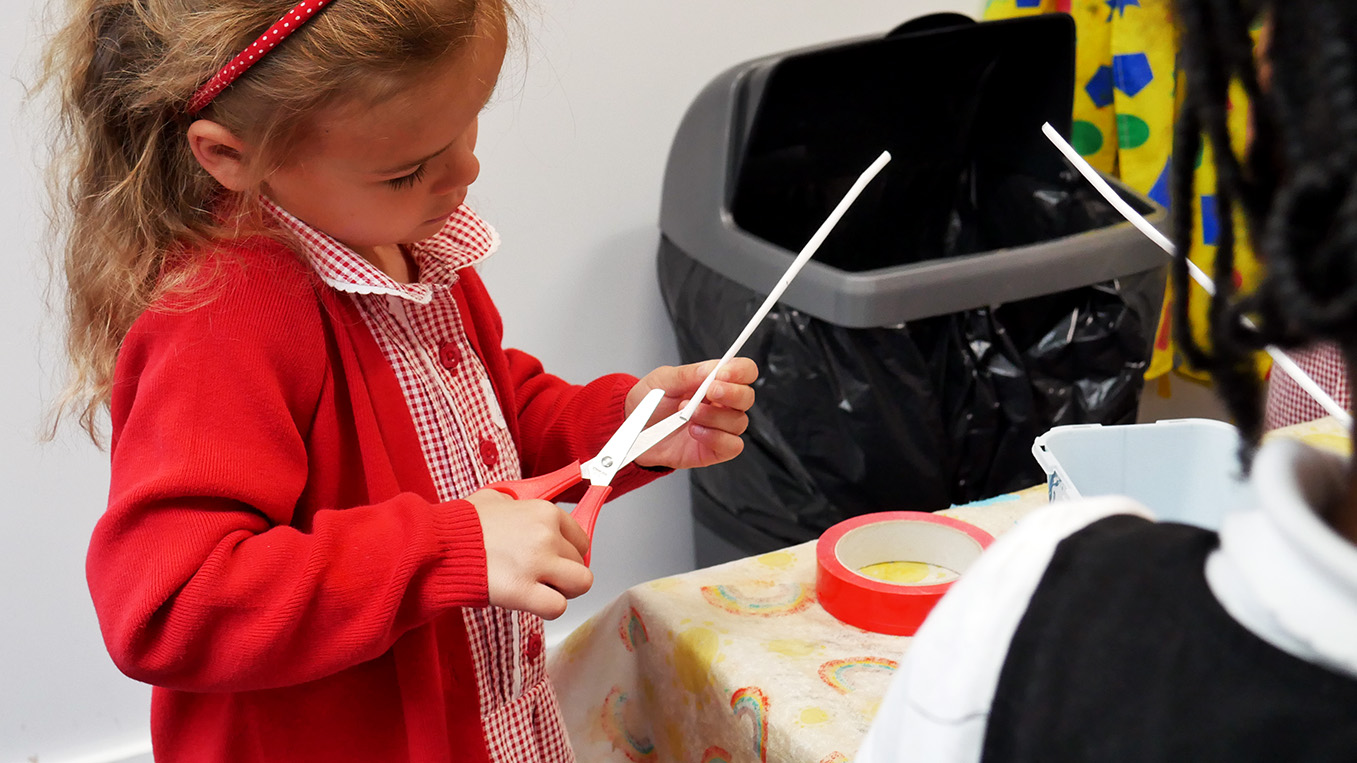
Art & Design in Key Stage 1 (KS1)
Pupils should be taught:
To use a range of materials creatively to design and make products
- To use drawing, painting and sculpture to develop and share their ideas, experiences and imagination
- To develop a wide range of art and design techniques in using colour, pattern, texture, line, shape, form and space
- About the work of a range of artists, craft makers and designers, describing the differences and similarities between different practises and disciplines, and making links to their own work
Programme of Study
| Term | Topic |
|---|---|
|
Terms 1 & 2 |
Portraits - Thomas Gainsborough - Digital, Print, Colour Wash & Sketching (Weeks 1, 2 & 3) In The Jungle - Henri Rousseau - Poster Paint & Collage (Weeks 7, 8 & 9) |
|
Terms 3 & 4 |
Weather - J.M.W. Turner - Watercolours & Chalk Pastels (Weeks 1, 2 & 3) The Love for Landscapes - John Constable - Sketching, Colour Wash & Poster Paint (Weeks 7, 8 & 9) |
|
Terms 5 & 6 |
The Beauty of Flowers - Georgia O'Keefe - Sculpture, Charcoal & Chalk Pastels (Weeks 1, 2 & 3) At the Seaside - Claude Monet - Poster Paint, Watercolour & Colour Wash (Weeks 7, 8 & 9) |
Art & Design in Key Stage 2 (KS2)
Pupils should be taught to develop their techniques, including their control and their use of materials, with creativity, experimentation and increasing awareness of different kinds of art, craft and design.
Pupils should be taught:
- To create sketch books to record their observations and use them to review and revisit ideas
- To improve their mastery of art and design techniques, including drawing, painting and sculpture with a range of materials [for example, pencil, charcoal, paint, clay]
- About great artists, architects and designers in history.
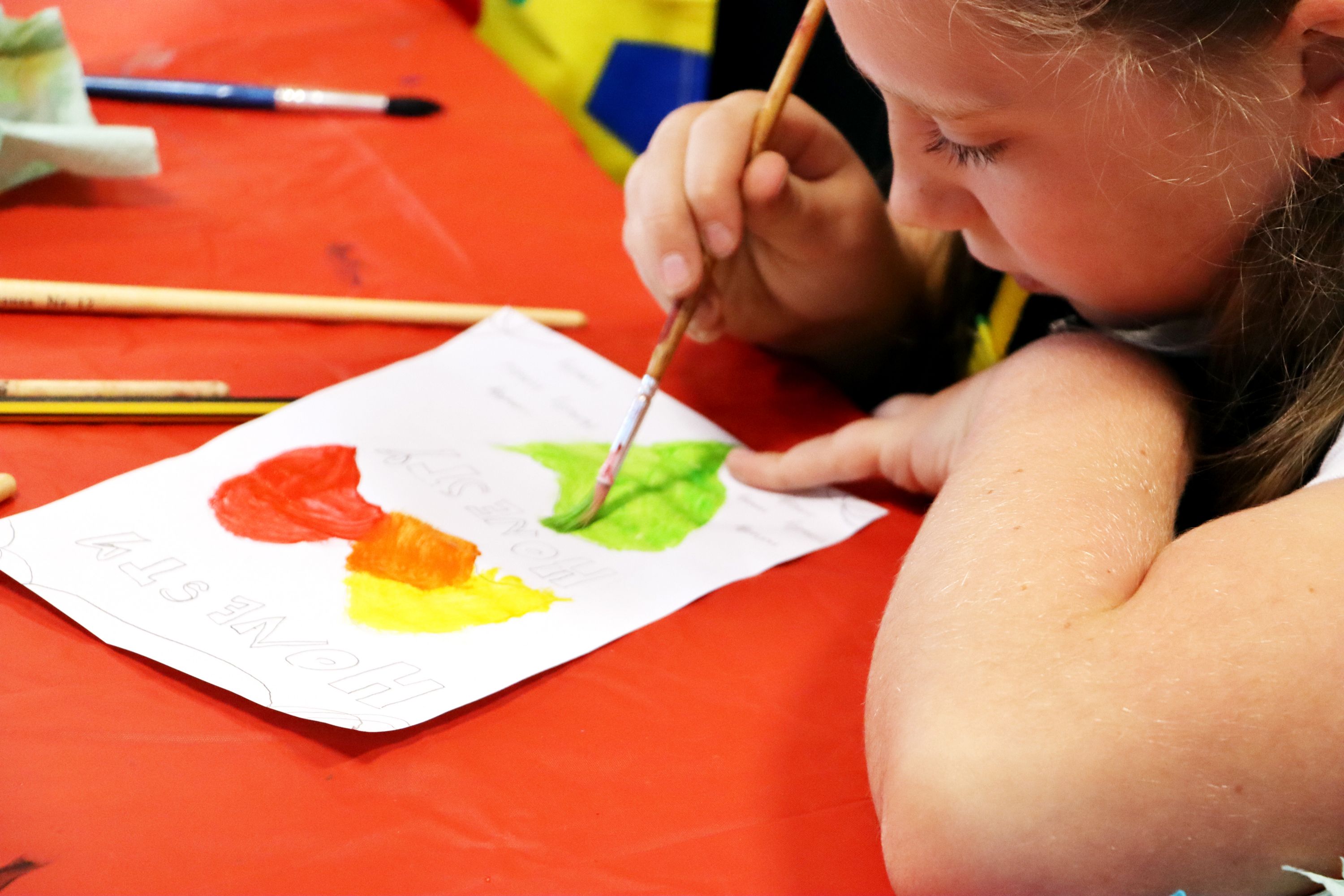
Programme of Study
| Term | Topic |
|---|---|
|
Terms 1 & 2 |
Animals - Rosa Bonheur - Sketching & Painting (Weeks 1, 2 & 3) Abstract Art - Wassily Kandinsky - Poster Paint & Collage (Weeks 7, 8 & 9) |
|
Terms 3 & 4 |
Royalty - Hans Holbein the Younger - Poster Paint & Chalk Pastels (Weeks 1, 2 & 3) Art Deco - Tamara de Lamocka - Sculpture & Poster Paint (Weeks 7, 8 & 9) |
|
Terms 5 & 6 |
Family Life - Susan Lordy and Henry Walton - Sculpture (Weeks 1, 2 & 3) A Journey into Space - Robert McCall - Collage, Poster Paint & Sketching (Weeks 7, 8 & 9) |
Progression
We develop our pupil’s Art and Design understanding through essential skills; growing their depth of knowledge year after year. We are able to monitor their progress and allocate extra support and adaptations to the curriculum for pupils to maintain a strong Art and Design education.
SEND Information
We ensure that SEND and disadvantaged children are given the necessary support in class to fully access the Art and Design Curriculum and equal opportunities are given for all to be confident in approaching any problem within the world around them.

